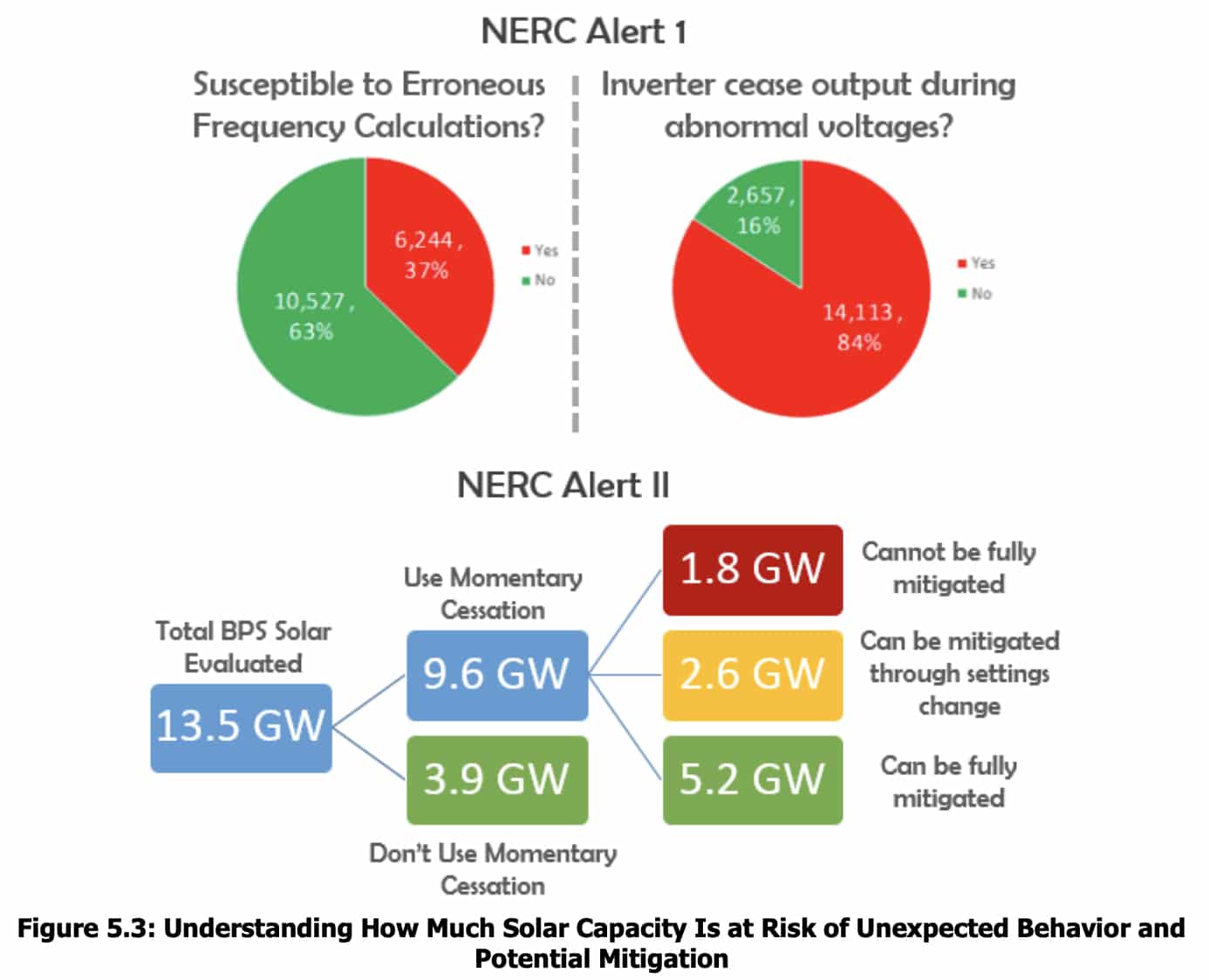In this year’s annual report on grid reliability, coal- and gas-fired generators were in the hot seat for poor performance and availability in 2018, as graded by the North American Electric Reliability Corporation (NERC).

The red rating means “Actionable: Year-over-year count increase and continues to be above the five-year average.” Per the “2019 State of Reliability” report:
Coal-fired generation shows a slight increasing trend over the five-year period and represents the highest forced-outage rate of all conventional fuels except during extreme winter weather when natural-gas-fired generation outages spike above coal.
Conversely, countering old beliefs that solar was incapable of providing frequency support when needed, the report says “there were frequency response improvements in all interconnections across North America.” These frequency response improvements continued a trend observed last year, and were achieved as more inverter-based resources—solar, wind, and storage—were added to the grid. Part of the credit for that goes to solar and wind farms that provide frequency support, which was once provided only by synchronous inertia from fossil-fired generators. The report noted improvements in frequency response as one of seven key findings.
In another key finding, “as more inverter-based resources are added, solutions to emerging reliability challenges are being identified.” The solutions refer to industry guidance developed following the October 2017 Canyon 2 wildfire in Anaheim, California, with associated transmission line faults that triggered 900 MW of solar resource loss.
NERC issued a solar loss alert in May 2018, which included the graphic in Figure 5.3. NERC collected data from solar generator owners and operators “to evaluate the extent of the condition and potential mitigation strategies.” The Western Electricity Coordinating Council worked with NERC to develop operating guidance for the industry, now available on the website of the Inverter-Based Resource Performance Task Force, including a key takeaways document published May 22, 2019, reflecting “technical discussion between inverter manufacturers, protective relay manufacturers, and industry experts.” The key takeaways document also references an IEEE technical report.

In a third key finding, the report cautions that “in Texas, there is still reliability risk in 2019 due to the projected capacity deficit.” This was the report’s only other red-flagged issue, beyond the coal and gas reliability issue.
Having flagged tight reserve margins in Texas in its report a year ago, NERC noted that Texas met a system-wide peak demand record of 73,308 MW on July 19, 2018, thanks to “higher than average peak availability from both wind and conventional generation, along with the use of demand response resources,” such that “emergency operating procedures, such as firm load shedding, was not needed.”
In the remaining key findings of the NERC report:
- 2018’s most serious “events”—measured by transmission, generation, and load loss—were Category 3 events due to Hurricane Michael and Hurricane Florence.
- “There were no non-weather-related category 3, 4, or 5 events in 2018.”
- “Despite continually evolving threats, no cyber or physical security incidents leading to unauthorized control actions or loss of load occurred in 2018.”
- “Protection system misoperations” that “exacerbate the severity of transmission outages continue to be reduced.”
Given recent talk of grid resilience, NERC’s definition of the term may be of interest; it encompasses “different dimensions of resilience (e.g., withstanding the direct impact, managing through the event, recovering from the events, and preparing for the next event).”
In one of three recommendations in the report, NERC said “The Electric Reliability Organization (ERO) Enterprise”—comprised of NERC and seven regional reliability entities—“and industry should develop comparative measurements and metrics to understand” those dimensions of resilience “during the most extreme events, and how system performance changes over time.”
The report’s other two recommendations addressed:
- Developing an improved ability to understand, model, and plan for a system with a significantly different resource mix.
- Understanding and sharing information on cyber and physical security threats, and mitigating the risks posed by such threats.
NERC was certified by the U.S. Federal Energy Regulatory Commission as the nation’s electric reliability organization in 2006, pursuant to the Energy Policy Act of 2005. Alaska, Hawaii, and Puerto Rico are not included in NERC, although an Alaskan organization has an affiliate membership.
This content is protected by copyright and may not be reused. If you want to cooperate with us and would like to reuse some of our content, please contact: editors@pv-magazine.com.







By submitting this form you agree to pv magazine using your data for the purposes of publishing your comment.
Your personal data will only be disclosed or otherwise transmitted to third parties for the purposes of spam filtering or if this is necessary for technical maintenance of the website. Any other transfer to third parties will not take place unless this is justified on the basis of applicable data protection regulations or if pv magazine is legally obliged to do so.
You may revoke this consent at any time with effect for the future, in which case your personal data will be deleted immediately. Otherwise, your data will be deleted if pv magazine has processed your request or the purpose of data storage is fulfilled.
Further information on data privacy can be found in our Data Protection Policy.